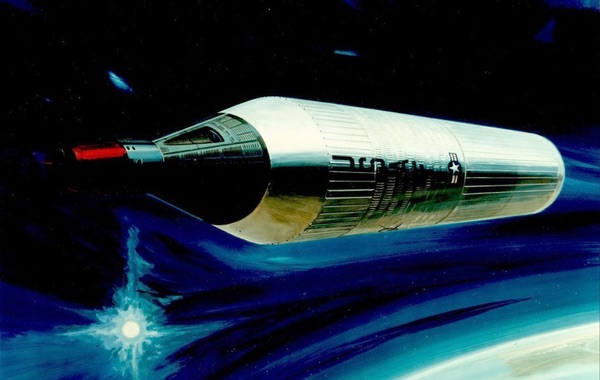The measure of a man: Evaluating the role of astronauts in the Manned Orbiting Laboratory program (part 3)by Dwayne A. Day
|
| “He was the Vice President of the United States and I was a Navy lieutenant,” Truly said. “It was a scary deal.” |
A lot was happening with MOL in 1967. In June, the US Air Force selected its third group of MOL astronauts, adding four more pilots to the thirteen who had previously been selected. This third group included Robert H. Lawrence, an Air Force officer who would have been the first African American to fly in space but died only a few months later in an airplane crash. The hardware was being designed and long-lead items, like the large mirrors for MOL’s DORIAN optics system, were beginning construction. But MOL had also come under increasing pressure over its cost, its schedule, and the vexing issue of whether or not astronauts were required for the mission at all (see part 1 and part 2.) The role of the MOL astronauts while on the ground was to oversee the development of the various spacecraft systems. Their role in orbit was to operate a sophisticated camera system, a task that was highly classified.
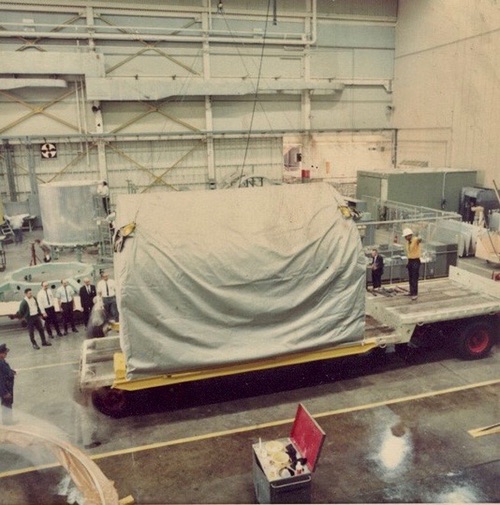 By 1967 and 1968, construction of engineering test hardware for MOL was well underway. |
In July, several of the MOL astronauts were scheduled to visit the National Photographic Interpretation Center (NPIC, pronounced “enpic”) located at the Washington Navy Yard in Washington, DC, for several days of “photographic intelligence indoctrination training.” Humphrey wanted to meet them. Those present included Majors Karol Bobko, Henry Hartsfield, and Robert Overmyer; Captain Gordon Fullerton; and Lieutenant Robert Crippen. Also attending were Major Lach Macleay and Truly, who were scheduled to brief Humphrey. “He was the Vice President of the United States and I was a Navy lieutenant,” Truly said. “It was a scary deal.”
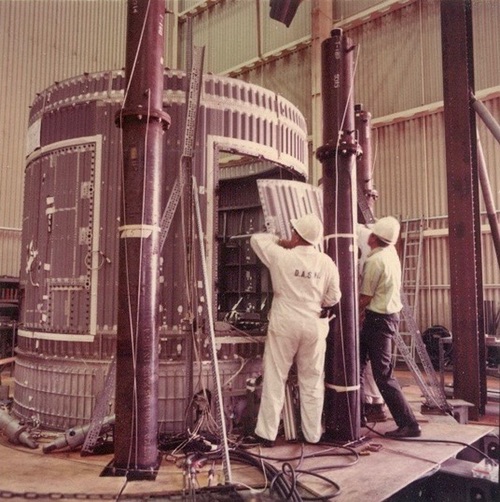 |
NPIC was located in a large building at the Navy Yard that had originally been built early in the century for assembling naval guns. After the Cuban Missile Crisis, when it was clear that NPIC’s existing building in downtown Washington was not sufficient for its expanding importance, the Navy Yard location was selected for their new facility. The building’s windows were bricked over and it was converted to support numerous photo-interpreters with their light tables for staring at film returned from reconnaissance satellites such as CORONA and GAMBIT, the venerable U-2 spyplane, as well as high-speed aircraft such as the A-12 and the SR-71 Blackbird. The building also had conference rooms and an auditorium for larger briefings, all highly classified. The MOL astronauts’ visit to NPIC provided an opportunity for Humphrey to meet the astronauts, and an opportunity for MOL officials to brief the Vice President about MOL, all in complete secrecy. “At that time, NPIC was covert—it didn’t exist,” Truly noted.
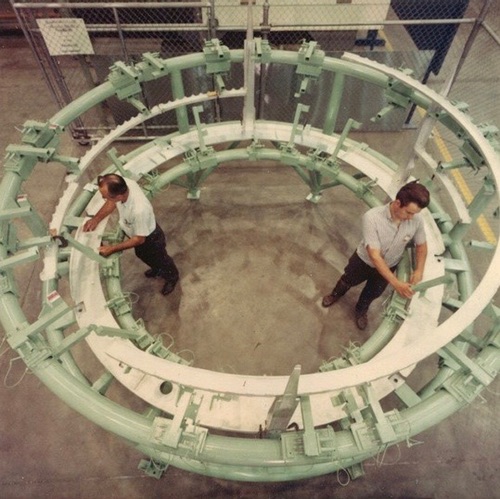 |
Truly did not remember going to NPIC at that time for training and checked his naval logbooks to be sure, determining that he and Macleay had flown from Los Angeles to Andrews Air Force Base in a T-38 on July 23 and returned on July 26. It was a short trip because they were only there to do the briefing and some other business, not to get trained. “I remember before the briefing working real hard to create the viewgraphs. Back then they were flimsies that you put on a projector,” Truly said. He thinks that Macleay may have done the actual briefing.
According to a recently declassified memo concerning the visit written by Major General James T. Stewart, Vice Director of the MOL program, Humphrey arrived about 45 minutes late for the visit. The initial briefing, held in a secure room at NPIC, involved Stewart telling Humphrey about the increasingly expensive and controversial program. According to a former NPIC photo-interpreter who was present for the briefing, at one point during the meeting Dick Helms, who had not spoken at all, wrote a note on a piece of paper, folded it, and slipped it in front of Humphrey, who glanced at it but did not say anything. After the briefing was over and the senior officials left the room, the photo-interpreter lingered behind and grabbed the piece of paper. On it, Helms had written “Why four inches?”
| After the briefing was over and the senior officials left the room, the photo-interpreter lingered behind and grabbed the piece of paper. On it, Helms had written “Why four inches?” |
Four inches was the resolution goal for the DORIAN camera system. The problem, according to the former photo-interpreter, was that the CIA did not believe such a high-resolution system was worth the high cost, and that lower resolution was fine for most intelligence requirements of the time. The intelligence community already had the KH-8 GAMBIT-3 high-resolution reconnaissance satellite in operation, and it didn’t need an astronaut to operate it. Helms obviously wanted the vice president to press General Stewart on this point.
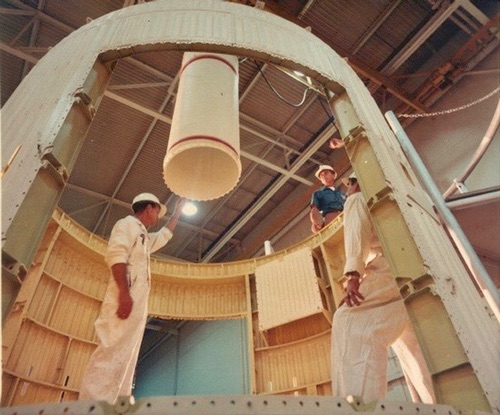 Low and high-fidelity mockups for the MOL spacecraft were constructed to help both engineers and astronauts determine how to use the systems. |
But Humphrey also informed Stewart that he was in an “economy mood today” because the government was having a hard time financing all the projects it was undertaking, and space “was under close scrutiny by an economy-minded Congress and administration.” Humphrey added that “everyone was being requested to tighten belts,” as Stewart recounted in his memo.
Humphrey pressed Stewart on a number of points. He was surprised that MOL was going to only last 30 days and be de-orbited at the end of its mission, and asked if there was a way to re-use the hardware. Stewart replied that although the current program did not involve re-using the spacecraft, it could be adapted to rendezvous and resupply and they were already conducting studies on how to do this if a follow-on program was approved.
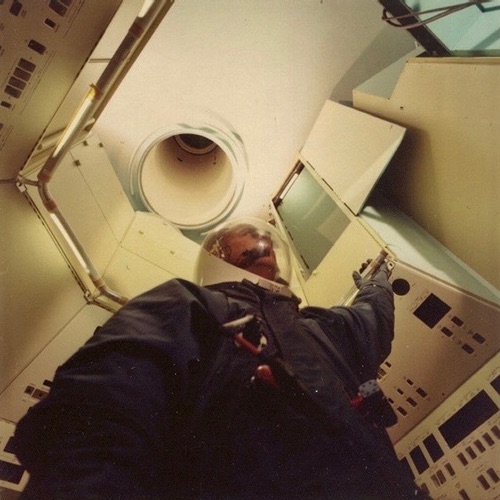 |
Stewart said that Humphrey was interested in the costs of MOL as well as the other robotic reconnaissance satellites then in use or planned. Each MOL mission, Stewart explained, cost $35–40 million. In comparison, each lower-resolution CORONA satellite mission cost $8–9 million. The recently concluded GAMBIT-1 program cost $10–11 million per mission. The GAMBIT-3 was $16–17 million, and the HEXAGON, when it became operational in a few years, would cost approximately $25 million per mission. Obviously MOL was pricey—twice as much as a GAMBIT-3, for example. Stewart indicated that once MOL was flying, the number of annual GAMBIT-3 missions could be reduced, although he did not say by how many. He added that Humphrey was interested to learn that when HEXAGON was flying it would conduct four to five missions per year for approximately the same cost as 10-12 annual CORONA missions, and produce more and higher-quality photography.
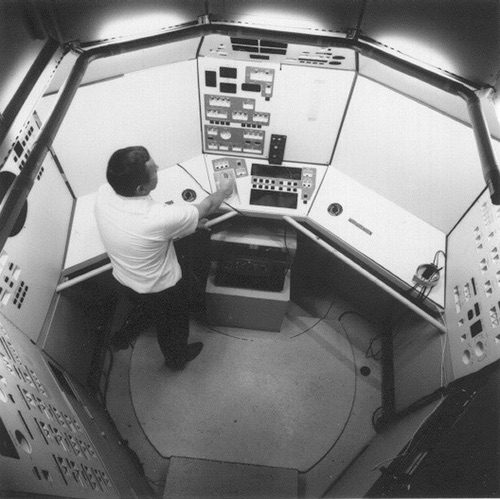 |
The CIA director did not stay for the full duration of the vice president’s visit, but his handwritten “Why four inches?” note still might have had an effect. Humphrey asked Stewart why the MOL’s high resolution was justified considering its much greater cost and complexity compared to the GAMBIT-3. The head of NPIC, Arthur Lundahl, explained to Humphrey that certain targets required very high resolution, and gave the example of anti-ballistic missiles which had to be identified and measured “in fine detail in order to determine performance characteristics.” The Soviet ABM system had become a major political issue that concerned President Lyndon Johnson.
The recently-declassified memo has one significant deletion: the use of very high-resolution photography against a specific target which Stewart stated he believed “impressed the Vice President more than anything else of the need for and value of very high resolution satellite photography.”
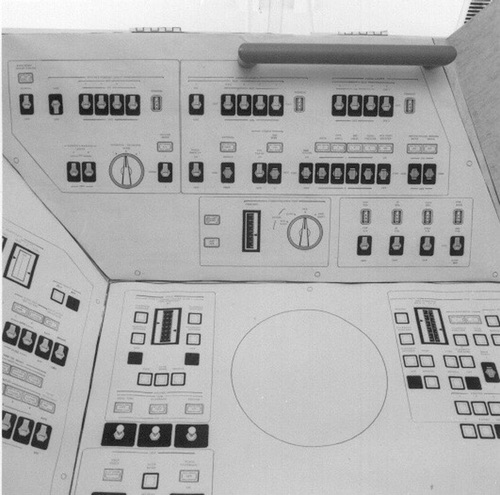 |
Humphrey also viewed drone photography of North Vietnam and expressed his disappointment “at the little apparent damage to various targets, one example was the main steel mill.” Humphrey thought that there had been sizable and repeated raids against these targets that should have produced more damage.
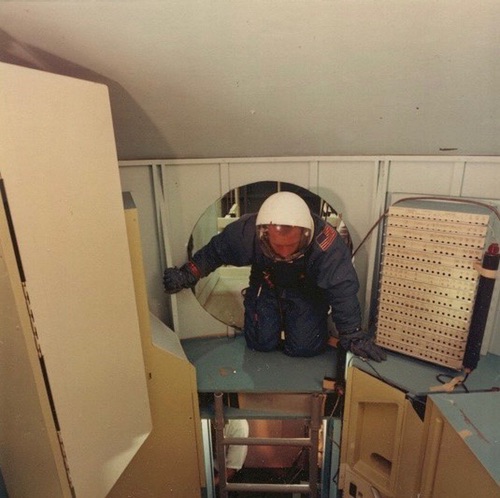 |
Although Truly does not remember many of the details of Humphrey’s visit, he recalls being amazed at the quality of the satellite photography and the work being conducted at NPIC. “I remember how impressed I was standing at those light tables and looking at the photographs of missiles and airplanes and submarines.”
| Truly said that the MOL astronauts were always busy. “There were so few of us and so much to do that we divvied it up,” he said. |
Humphrey’s visit was only supposed to last an hour, but he stayed for 90 minutes, and Stewart indicated that he was pleased with the visit. But his numerous questions about the cost of MOL and whether it could be reused put the program office on notice that they were being scrutinized, and his questions about the costs of various programs and his statement that the government was looking to economize, especially in space programs, should have been a warning. In April 1968, after Lyndon Johnson announced he would not run for re-election, Humphrey launched his own presidential candidacy, but he lost to Richard Nixon in November.
Flying and photographing
Although Truly does not remember much about the actual visit by Vice President Humphrey and the briefing, he said that Humphrey later sent him a signed, personally inscribed photograph. At the time of their visit to NPIC, Macleay and Truly were working on the crew interface for the camera and the small spotting telescopes. “All the switchologies and buttons and such,” he said. They were also developing mission simulators. He had responsibility for Gemini for a while but spent most of his time during the MOL program doing the crew interface task.
After briefing the vice president on July 25, the next day Truly and Macleay conducted three flights in a Pilatus Turboporter owned by DataCorp, flying between Andrews Air Force Base and Baltimore. The Turboporter was a powerful propeller-driven aircraft, and DataCorp’s plane was equipped with a system for simulating the image motion compensation in the MOL’s DORIAN camera system. Macleay and Truly were there to check it out. After those three flights, the two astronauts hopped in their T-38 and flew back to Los Angeles, stopping twice along the way to refuel—six flights in one day, which he said was a lot of flying.
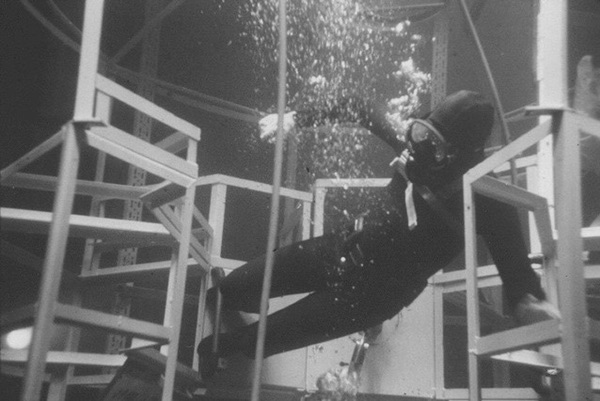 To develop MOL, contractors performed underwater tests to evaluate restraint devices and other design choices. |
Truly said that the MOL astronauts were always busy. “There were so few of us and so much to do that we divvied it up,” he said. One of the recommendations in a May 1966 report on the manned aspect of the MOL program was that NASA astronauts should be consulted for MOL in order to provide their human spaceflight experience. But Truly does not think that any of the NASA astronauts were ever cleared on the program. Although he could not remember for sure, he agreed that if a NASA astronaut had shown up in their offices or for briefings they would have made an impression and he probably would have remembered it. Outsiders were rare because the program was highly classified. “Back then you didn’t talk about DORIAN or any of the programs without personally getting introduced” by somebody who already had the clearance, Truly remembered. “Back then it was really spooky, because you didn’t know about other programs. You didn’t poke around.”
Delays, and cancellation
An NRO historian, the late Robert Perry, once wrote that the development of satellite reconnaissance was more a case of technology pushing what the intelligence community could do than requirements pulling the technology along. Engineers were designing the best possible technology they could, and the intelligence analysts were figuring out how to use it. That was certainly the case with MOL. There was no clear and pressing requirement for MOL’s very high resolution, and that lack of demand combined with its high cost made MOL vulnerable to cancellation. In October 1967, the MOL program office had produced another detailed study attempting to justify the requirement for astronauts onboard the spacecraft. But if senior government officials like the President’s Science Advisory Committee, the Director of Central Intelligence, and ultimately the President of the United States did not agree, then MOL was in trouble.
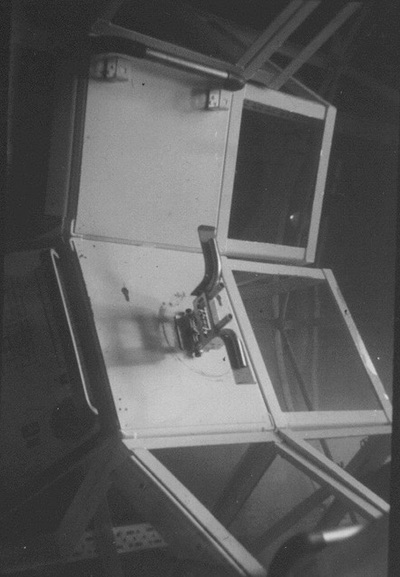 |
By early 1969, there were increasingly loud voices of opposition to the program—albeit within the hush-hush world of a highly-classified reconnaissance program. The President’s Scientific Advisory Committee (known as PSAC) apparently sounded off about MOL several times. One of the issues that emerged was not even mentioned in either the 1966 or 1967 reports about the value of astronauts for MOL: the fact that adding astronauts to the spacecraft could degrade the performance of high-precision optical systems. Astronauts introduced vibrations to the system, and their spacecraft vented things that had a habit of surrounding the vehicle like a cloud, possibly condensing on cold optics.
| One of the issues that emerged was not even mentioned in either the 1966 or 1967 reports about the value of astronauts for MOL: the fact that adding astronauts to the spacecraft could degrade the performance of high-precision optical systems. |
At the same time, the Vietnam War was consuming more and more of the defense budget, and MOL was competing with another large reconnaissance satellite in development known as HEXAGON and backed by the CIA. HEXAGON could not match MOL’s resolution, but it could cover huge amounts of territory in each image, making it highly useful for tasks like monitoring arms control agreements. The new administration’s budget targets for the Defense Department included enough money for one new large satellite program, but not two. Either MOL or HEXAGON had to go.
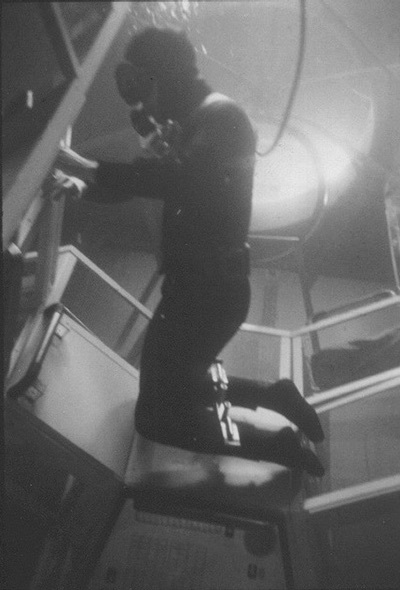 |
In spring 1969, President Nixon canceled HEXAGON, only to reverse his decision after protests from Director of Central Intelligence Richard Helms—the man who had previously prodded Hubert Humphrey to ask why MOL’s four-inch resolution was necessary. Both MOL and HEXAGON continued for several more months before Nixon canceled MOL in June 1969. The decision surprised most of the people involved in MOL—especially the MOL astronauts—although those at the highest reaches of the program were undoubtedly aware of the criticism coming from PSAC and other officials outside of the program itself.
Truly and another astronaut were on the East Coast visiting a contractor facility when they found out about the cancellation in the morning. They were shocked. So they did what all fighter pilots do after a tough day: they headed to the bar. In the afternoon they received orders to fly back to Los Angeles.
But by that time, they were in no condition to fly.
